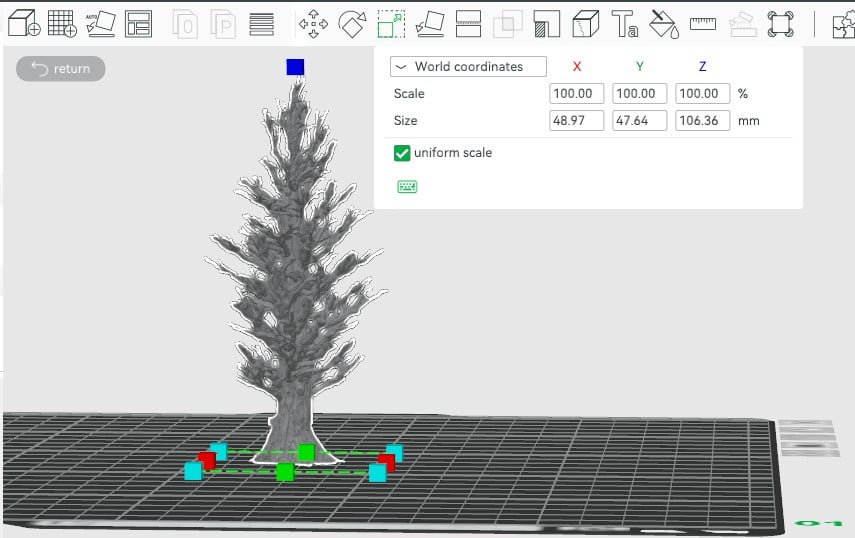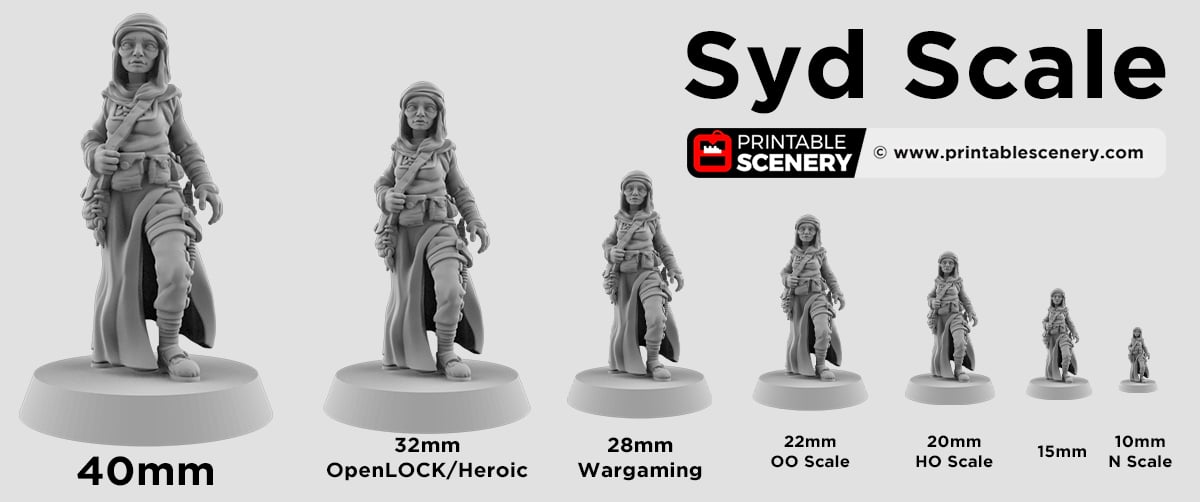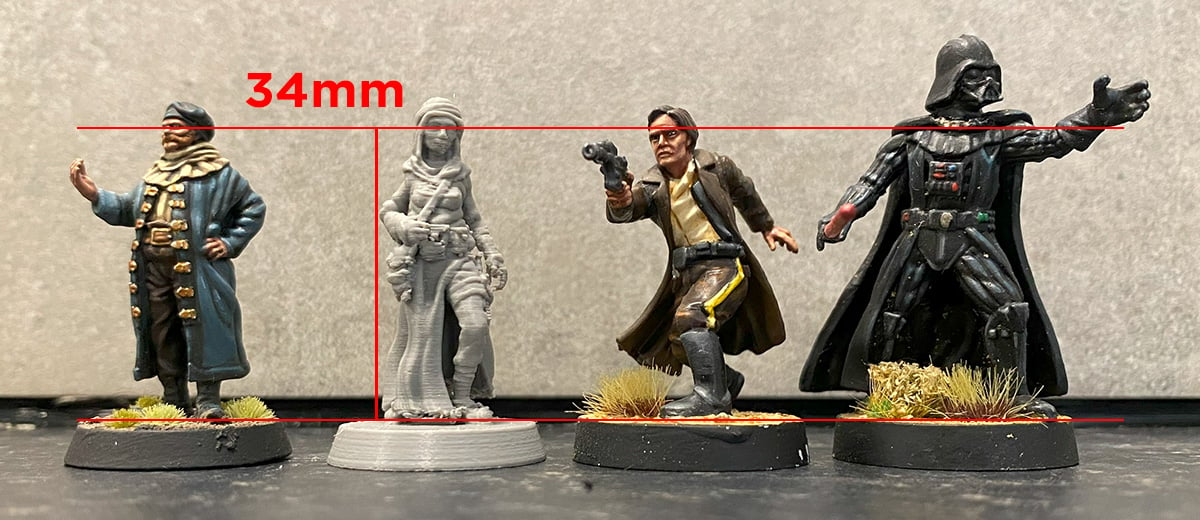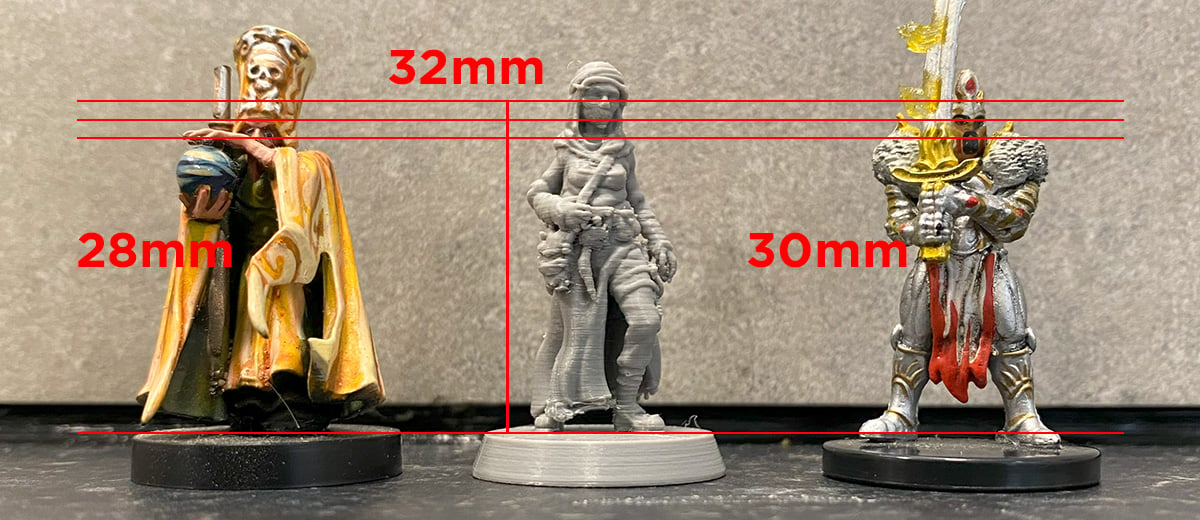
Scaling Printable Scenery Models
Here at Printable Scenery, we do our best to ensure our models best represent the scale they’re designed for. We do this through testing and experimenting till it’s right. Most of our models are 28mm-32mm and sometimes in between. We use relative scaling, which, in short, means things are scaled to the relative height of things in that world. We’ll cover that in more detail at the end.
Scale is important in the miniature hobby for several reasons. The main ones are immersion and consistency. When your models look like they are too tall to fit through doorways or your vehicles are inconsistent with each other, it breaks immersion and cohesion. Scaling models with a 3D printer, however, is incredibly simple if you know the conversion, and it means you can use almost any model for any scale.
Printable Scenery Scale Calculator tool
To quickly check the scale of the model you’re viewing on the Printable Scenery website, we’ve added a tab to every product labelled “Scale Calculator.”

There, you can see the scale of the model you’ll receive as an STL file (the row highlighted) and the percentages you need to scale up or down to print at a different scale. We’ve listed the most common scales we use, but there is also a custom converter at the bottom that you can use.
Scaling Printable Scenery models in the slicer
Every 3D printer comes with software called a slicer, which prepares STL files for printing. The slicer can also be used to make changes to the file before printing, including changing the scale of the model.

For most slicers, the scaling tools are on the left of the scene. Each slicer has a different interface, but they all have the ability to scale. Make sure uniform scaling is selected to prevent the miniatures from warping.
Here is a video explaining it on our YouTube channel.
Syd Scale
We designed Syd Scale for the exact purpose of testing scales. It’s our measuring stick for new models, and it also happens to be an awesome model.

You can use the scale Syd in your Slicer software to compare to terrain you’re printing to make sure you’re happy with the scale. Syd is on the taller end of average for a human, intended to represent a soldier in most cases, as that is what we use in the majority of miniature gaming.

For example, if you want to check that the building you’re about to print is 28mm, you can use the 28mm Syd. If it looks like she’s going to fit through the doors of the building in terms of her height, then the scale is good. We ignore base sizes for doorway scale checks, as bases don’t always represent a mini’s scale. For example, many 32mm models are on 25mm bases, and so on.

In the above example, you can see how Syd works alongside some other miniatures at a similar scale. We’ve got a grocer model from Printable Scenery and a couple of models from Star Wars Legion, known to be 1/47 scale. This is useful as we can use Syd at this scale to check any buildings we plan to print for use in Star Wars Legion within the slicer.

Above, we can see a 28mm example, the scale used in many wargames like Bolt Action. This is also a good example of the impact base height makes when comparing scales—something to be mindful of when checking scales. For this reason, we have included an unbased version of Syd in the product package.

In this example, we’re looking at a common wild west scale, 1/56 scale, that realistically ranges from 28 mm to 32 mm. Many games, like Warhammer and models from Wizkids, will say they’re 28mm, but this can vary a lot from model to model. They also use what’s called “Heroic Scale,” which alters the perception of the model, too. Proportions are exaggerated, and some big hats and poses are often dynamic, making scale hard to be accurate with. We’ve used a 32mm Syd in this example to show how you can get away with a bit of variation in these games and stay “in scale”. Again, though, base height is an essential factor.
Miniature scale in more detail
The term “scale models” comes from the idea that the models are on a relative scale with each other. This process is calculated by using the measurements of the life-sized object the model is scaled off, in most cases, this is a human.
To find out the scale of your miniature, you’ll need to measure it from the bottom of the feet to either the eye level or the top of the head. We always measure to eye level. Then you need to know the measurements of the life-sized object; in most cases, this is a human.
If your model is a human soldier, you can make some assumptions, like it’s an average male of 180cm. So if your model is 30mm or 3cm, you need to divide the life-sized object by the model: 180/3=60. So our model is 1/60 scale, or 28mm scale if that is your preferred scale (30mm high models are often still labelled 28mm scale).
You can use this same method to work backwards to determine the desired measurement of a model if you know the scale you want. For example, a 180cm tall soldier at 1/60 scale is going to be 3cm tall (180/60=3), or 2.36cm tall if you want it to be at 1/76 scale (180/76=2.36).
Absolute vs Relative scale
Sometimes you’ll hear models described as relative or absolute. Relative means they’re scaled relative to their surroundings, so a car will be scaled relative to the human driving it. This is generally the more immersive method of scaling. But the drawbacks can be facing impractical sizes for the purposes of playing for example.
Absolute scaling on the other hand is a method of scaling where the models are capped at a certain measurement, usually height, and doesn’t vary from that at all. Think Monopoly houses and pieces. The shoes is the same height as the boat, as is the hotel. This is fine for some game modes but not great for creating immersive modelling.
There are hybrids of the two where the majority is on an absolute scale, but there is variance within, like a short species is shorter, even if not to an exact scale. Warhammer is mostly known for this, where there is little difference in height between Space Marines, humans, and Orcs, for example. The scale primarily represents a miniaturised war scenario where base size is the most essential aspect of playability.
Heroic scale is a term for describing the proportions of a miniature more than its height. Heroic scale minis tend to be broader and thicker in the limbs, have bigger hands, and have exaggerated facial expressions.
Hope this has been some help! If you have any questions on miniature scale, feel free to reach out, and we’ll help in any way we can.

Is it possible to print at 268% to give 75mm scale scenery please?
Yes this is possible depending on the size of your printer and being able to cut the model to fit your printer.
So for 54mm would be almost double
Double would be 56mm, go for 1.9. you would be surprised how much difference .1 makes when scaling volumetrically